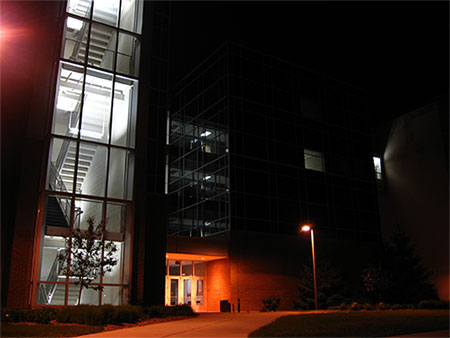Maintaining a safe and secure environment is always a difficult challenge but can become more complex when protecting an entire college or university. The challenge of providing a safe and secure learning environment, while presenting an open, inviting campus atmosphere, is almost unique to the college/university environment. However, it is always important to remember the core fundamentals for a successful security strategy: DETER, DETECT, and DELAY. While it is imperative to consider all three of these, this article discusses the three highlights for the first fundamental, deter.
DETER is defined as the act of discouraging someone from doing something, typically by instilling doubt or fear of the consequences. When applying this fundamental to security, deter is the first line of defense when protecting people or assets. Colleges’ and universities’ main objective is to create a safe environment for all students and faculty, but this is not as easy as it seems.
When planning a strategy to deter crime from occurring, focus on the three primary deter fundamentals: natural territory reinforcement, lighting and security presence.
Natural territory reinforcement is a Crime Prevention through Environmental Design (CPTED) concept that promotes social control by defining ownership of a given space. When applied correctly, this illustrates property ownership and reinforces that non-authorized personnel can be easily identified. This concept can be best initiated by the following strategies:
- Low fencing – When a campus is located in an urban environment, low fencing will reinforce the property delineation by reducing the amount of non-campus traffic on campus property. Other strategies include high curbs, significantly different landscaping from surrounding properties and different building color when compared to adjacent buildings.
- Clear ownership of property – From the empty lot that is under construction to the wooded area near the athletic fields, every area needs to be clearly identified as property of the campus. In doing so, this promotes that the area has an owner, is well maintained, and is monitored, preventing someone from unauthorized entry.
After identifying ownership of the campus’ territory, it is important to consider the lighting in highly-trafficked areas. Lighting is a major security element to provide a safe environment, focusing on providing sufficient light levels in major open areas, such as parking lots. There are many areas of campuses that should be a priority including:
- Building entrances – Entrance vestibules typically have excellent lighting provided by interior light fixtures. As an example, before exiting a building, you may be surrounded by 15- to 30-foot candles that provide exceptional lighting. However, once you are on the outside of the building you are typically only standing in about 3- to 5-foot candles, which is still acceptable, allowing your eyes to adjust accordingly. The real challenge is the 10- to 15-foot area around each building entrance that has less than 0.3-foot candles. The human eye cannot see anything in this light level. This concept is called lighting ratio, and you want the lighting ration to be as low as possible.
When designing lighting improvements, it is important to gradually reduce the lighting (low lighting ratios) as you leave the building entrance to allow for the human eye to adjust, increasing their situational awareness and enhancing safety.
- Building exterior – It is important to light all entrance and exits of a building, even if there is only one designated point of entry. There are many reasons why this is important but a significant reason is that this allows for a point of safety for a student/visitor to utilize during an emergency situation. Most criminals/vagrants will be discouraged from carrying out their malicious action in a well-lit area.
Finally, it is important to ensure a security presence throughout the campus. Security presence on a campus can be accomplished in several different formats ranging from the traditional security guard to the set-up of properly-positioned security cameras.
- Guard patrol – Guard patrol is typically associated with a uniformed security guard walking a predetermined path looking for suspicious behavior. While this is a valid solution, there are many other forms of guard patrol, such as awareness of campus security. Some non-traditional examples include: an administrator walking between buildings, a maintenance worker mowing athletic fields, or even a student that has been briefed that security is their responsibility.
The concept that “everyone” is a security guard is not new but not normally adopted by colleges. By adopting it, though, the security presence on campus increases exponentially, reducing the opportunity for crimes to take place.
- Security cameras – Security cameras act as a visual deterrent even before they actually perform their designed function. Careful placement of cameras on the exterior and interior of a facility will both deter and provide the right video recordings for later investigation.
One key, often overlooked, option available for cameras is smoke lenses. While these are not ideal in all security camera locations, smoke lens can provide a greater sense of coverage area because a potential criminal doesn’t know which direction the camera is facing. This ambiguity could be just enough for the criminal to not carry out their malicious intentions.
Not all security improvements revolve around the latest, most advanced security equipment that could potential consume an entire year’s budget. It is actually the opposite as carefully pre-planned campus improvements have a positive effect on the overall security of the college. Applying some of the concepts covered above will greatly enhance the safety/security of your campus.